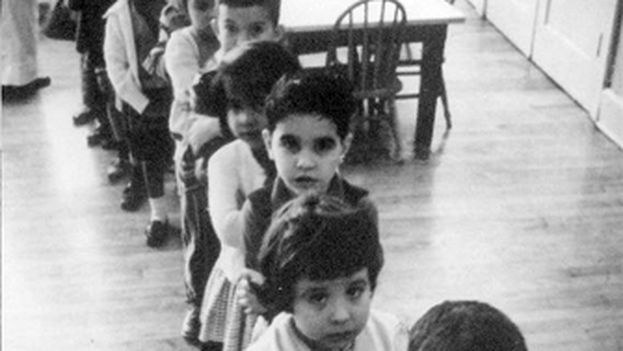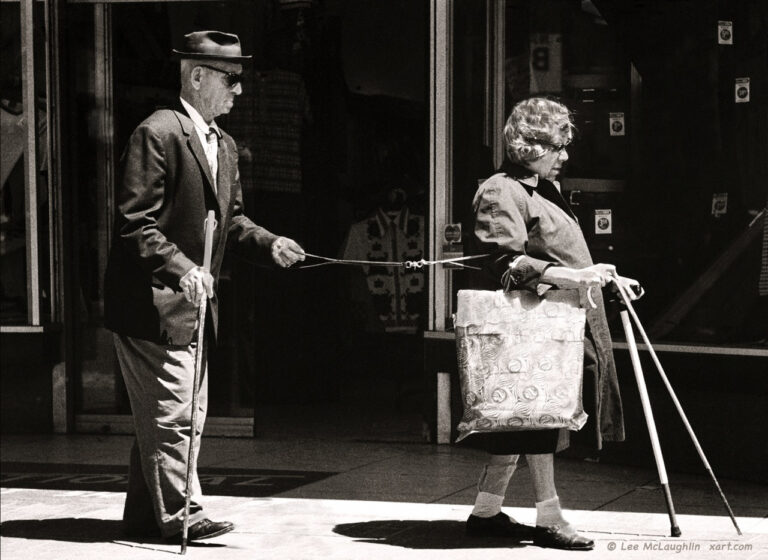The Othering Power of Fatness

When I flipped to the opening story of Raymond Carver’s short story collection Will You Please Be Quiet, Please? while wandering through the Strand bookstore one Saturday morning and saw the word “fat” glaring back at me from the top of the page, I braced myself. Depictions of fatness in literary “classics” tend to land somewhere in the realm of shame, isolation, and moral corruption. Take, for instance, Mademoiselle in Vladimir Nabokov’s Speak Memory and Ramona in Jean Stafford’s “The Echo and the Nemesis”—two characters who led isolated lives because they did not adhere to beauty norms dictated by white ideals. I assumed I would find Carver’s fat character to be similarly problematic.
As someone who has often been defined by their weight, I have encountered first-hand how discussion of the body—both inside of and beyond literary representations—often perpetuates the creation of the “other.” A week rarely passes in which I do not hear “fat” thrown around with intent to wound, judge or pity. Even now, with discourse around weight moving towards a positive reframe of empowerment (which itself deflects responsibility from society and onto the individual), this word retains the capacity to dominate, or at the very least, maintains the ability to induce squirming.
I suspect the othering power of fatness is why it grabbed Carver’s attention. In the opening of “An Interview with Raymond Carver,” published by the Mississippi Review in 2012, Larry McCaffery and Sinda Gregory describe Carver’s stories as normal destabilized:
… your initial impression of verisimilitude gives way to an unsettling recognition that things are simply not as they appear. Or rather, that things are more than what they appear, for often commonplace objects in his stories— a broken refrigerator, cars, cigarettes, a bottle of beer or whiskey— become in Carver’s hands more than realistic props in realistic stories, but powerful, emotionally charged signifiers in and of themselves.
Carver’s draw to the ability of fatness to bring about discomfort in an observer aligns with the voyeuristic nature of the remainder of the collection. The other stories in Will You Please Be Quiet, Please? center on looking: in “The Idea,” the narrator watches her neighbor as he spies on his own wife; in the title story, a man stands in front of a mirror gazing at his reflection, in which he saw “nothing out of the ordinary.” Throughout, Will You Please Be Quiet, Please?—which was originally published in 1976 by McGraw-Hill and earned him a National Book Award nomination—Carver moves through the inner lives of ordinary people coming against external realities. In opening with a story focused on fatness, Carver invites the reader to observe this tension.
In the story titled “Fat,” an unnamed narrator tells her friend Rita, “over coffee and cigarettes,” of a recent evening: the narrator works as a waitress and speaks of her experience serving a man she believes to be a first-time customer in the restaurant where she is employed. The narrator describes him as “the fattest person I have ever seen, though he is neat-appearing and well-dressed enough. Everything about him is big.” She continues, “He was big. I mean big,” before listing the details of the man’s meal order: a Caesar salad, a bowl of soup with extra bread and butter, lamb chops, and a baked potato with sour cream, with an agreement to circle back later regarding dessert. After taking the man’s order, a fellow staff member takes a jab at the narrator regarding the man at her table. “Who’s your fat friend? He’s a real fatty.” In disheartening predictability, the man ploughs through the food before him, even apologizing to the waitress for doing so; in response, the narrator assures him that she likes to see a man eat. The man’s breathing is described as “puffing” to let the reader know the action is difficult for him due to his weight.
No matter how many times I re-read the story, I am left perplexed.
I am firstly perplexed by how the man repeatedly refers to himself in first person plural when speaking. “We don’t often enjoy bread like this,” he says. And later, “We don’t eat like this all of the time.” Am I to understand this man has another self—an insatiable one—trapped inside of the physical one, as though humans answer to inexplicable, usurping desires? Or am I to understand “we” as representing a collective—that this man is every fat man? I am certain this man, were he a real person, would have experienced many years of life before eating this meal. He is, however, limited to his body and the ideas held therein. I would like to believe that Carver is pointing the reader in this direction, but I wonder.
My second query comes near the end of the piece. The narrator is interrupted by her partner Rudy. He says, “you got a fat man from the circus out there?” The narrator rebukes him. “Rudy, he is fat, I say, but that’s not the whole story.” Is the wholeness the narrator sees, that Rudy misses, the man’s humanity? I sink inward, saddened that consideration of the man as a thinking, feeling, desirous person is radical on the part of the narrator. Likewise, is the narrator implying that people might have reasons for being fat and those reasons go unnamed in the face of superficial assumption?
The narrator returns to the man, dessert in hand. “Believe it or not, he says, we have not always eaten like this.” To which she replies, “Me, I eat and eat and I can’t gain, I say. I’d like to gain.” The man then tells her, “If we had our choice, no. But there is no choice.” The narrator leaves work with Rudy, imagining her future children, thinking about one being fat. At home, Rudy interrupts the narrator’s thoughts with an anecdote of two kids he bullied in his youth. Wobbly and Fat were the pejoratives he used to replace their names. The night concludes with Rudy and the narrator in bed together. Rudy rapes the narrator. The narrator recounts to Rita, “When he gets on me, I suddenly feel I am fat. I feel I am terrifically fat, so fat that Rudy is a tiny thing and hardly there at all.”
The story ends somewhat abruptly from there. The narrator becomes self-conscious in front of Rita, who has been listening. The narrator mentions feeling depressed before wondering what Rita, with her dainty fingers, is waiting to hear, as if there were something else, something more meaningful perhaps, that she might say in conclusion. We are left with the impression that the narrator feels her life is about to change.
While fiction should reveal us to ourselves without the pressure of providing didactic undertones, I am left with a few lingering questions regarding Carver’s intent. Am I to understand the direct response to rape is the desire to gain weight? Or is it that the narrator sees fatness as a way to keep unwanted attention away, to shield—as though she enters into her other, desiring self—the self that wants Rudy to leave her alone? Am I to understand that depression is heavy on the body in one way or another, literal or otherwise? Or is it that the narrator has developed a deeper understanding of the domination food has over the man’s body as hers is overtaken by Rudy’s desire, suggesting a merging in her mind of the two?
Critical theory surrounding the topic of fatness in American society ranges in focus based on the background and agenda from which it is written. In the field of medicine, terms such as “over-weight” and “obese” conflate fatness with health risk and, therefore, define the fat person as one in a state that requires alteration—often by means of purging or cleansing. Fatness in this sense, one could argue, provokes undesirable thoughts of mortality. In mainstream culture, which views the individual as object or commodity, language branches more into discussions of body power, nodding to patriarchal constructs of desirability. With the surge of the body positive movement, however, this language has much more to do with relief from self-hatred and shame inflicted by society than it does with the size and shape of the body itself. Work, in this sense, centers on the internal, with the goal being to empower the individual to off-set echoes of puritanical views that typify the idea that the body is meant to be kept under submission for the sake of moral respectability.
One important text focused on analyzing shifting fatness-related motifs is Amy Farrell’s Fat Shame: Stigma and the Fat Body in American Culture. Farrell explores the denigration of fatness in the nineteenth and twentieth century, which has resulted in the current fractures in the fatness debate, spending time, in particular, on puritanical views of restraint and patriarchal constructs. She writes, “the spectacle of the fat person engages its viewers precisely because it is perceived to be so different, so far removed from the bodily experience of the ‘average’ person.”
The fat man in Carver’s story, then, is synonymous not only with fatness as metaphor (in his case, lack of restraint equals shame equals freak show), but also with fatness as spectacle. He is gawked at by the staff of the restaurant, and is never given his own name or any description that does not correlate to his size. His presence in the restaurant, with his body depicted as abnormality, causes a great upheaval in the narrator and the other wait staff; the wait staff speaks about him as though his physical form has taken on a shape beyond their understanding that he is, in fact, a human being. The man is never once merely a man having dinner—he is “the fat man” having dinner. The man’s body perpetually precedes his humanity. Does this man have a job? A family? A home? The reductive nature in which he is written is meant to signal that when a fat person enters the room, the specifics of his life are altogether erased. He is simultaneously vulnerable and hidden in plain sight.
Ultimately, the story is not about the fat man at all, but is instead about the wait staff’s reaction the spectacle of his presence. I struggle as a reader with how the man’s body is used to enlighten those in the acceptable body experience. His weight, intended to represent the fears and inner tensions of viewers rather than his own, is twisted into punch lines. A similarity arises that aligns with ongoing debates around representations of race, ethnicity and gender— must it always be the “other” who is offered up for the sake of greater understanding?
Beyond being a “spectacle,” Farrell writes, the fat person is also the object of society’s desire to “normalize” or create submissive bodies: “the idea that one’s physical body can be read for signs of personal worthiness and quality persists… Moreover, fat denigration works in complicated ways to reinforce the existence of racism, sexism, homophobia and all other processes by which our culture categorizes and oppresses people through bodily hierarchies and stigmatization.” In Carver’s “Fat,” the male lead, Rudy, retains dominance. When he declares feelings of disgust towards the man and when he rapes the narrator, we see that Rudy’s response to both fat and feminine forms aligns with the systemic disempowerment of the non-dominant individual.
Although “Fat” was written several decades ago, fat people are still often limited to existing and being written as metaphor and spectacle—fatness is a trope, a qualifier, a literary device. Fat characters are fat first. While Carver reveals the limitations of depicting fat characters on the page, showing the ways in which fatness both precedes and informs all else, I am bereft to think that he considers this to be the fat experience. Like many of the characters throughout the rest of the book who function as onlookers, Carver never allows the man to do anything other than receive the gaze. Perhaps Carver demonstrates the crack in social understanding by mirroring the narrative.
Upon reading that his characters were seen as outsiders, Carver told Bruce Webber, in a profile for New York Times Magazine, “Until I started reading these reviews of my work, praising me, I never felt the people I was writing about were so bad… The waitress, the bus driver, the mechanic, the hotel keeper. God, the country is filled with these people. They’re good people. People doing the best they could.” Yet the first time I read through “Fat,” I was with overcome with rage. So rarely does literature speak to fatness with fullness that I find myself desperate to see fat characters who move beyond the limitations of their size. But I brought my own frustrations to the piece, wanting desperately to see the man enlivened to power and efficacy. Instead I found him in the midst of cultural reality, a reality I wish to see differently. It took time for me to understand that Carver assumes the man in the restaurant is good.
I don’t know what the future of writing about fatness looks like. I do know it is a topic that cannot be skirted around much longer, based on the increasing number of American lives in the midst of the daily experience of it. By sheer volume, fatness will demand deconstruction and nuance. It will require a multiplicity of understanding. Writers will need to consider what exactly they intend to portray when rendering characters who are fat. I am left thinking of the narrator’s response to Rudy’s callous belittlement of the man: “Rudy, he is fat, I say, but that’s not the whole story.” Will fat characters be allowed their own narrative outside of their relationship to fatness? Will a fat person be a person first?


